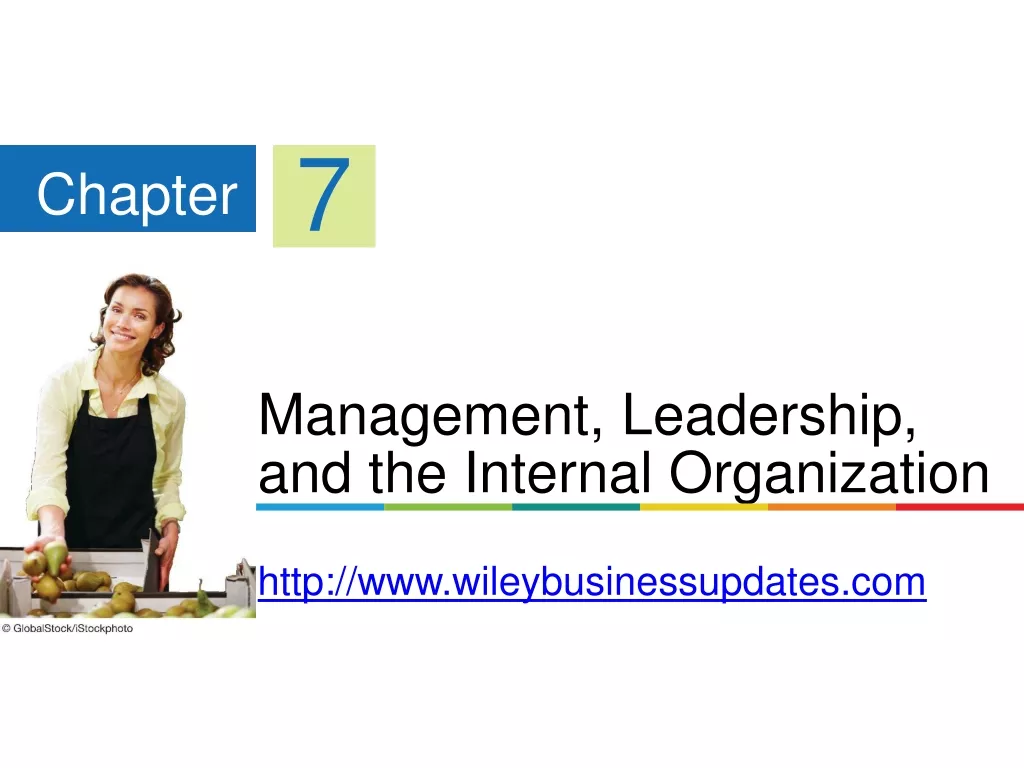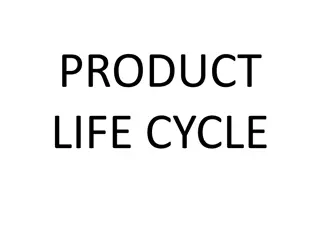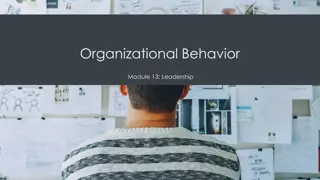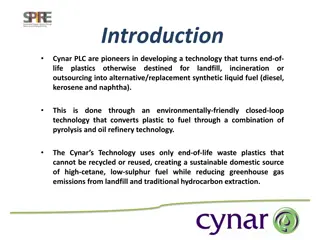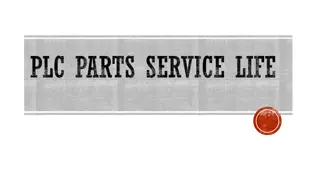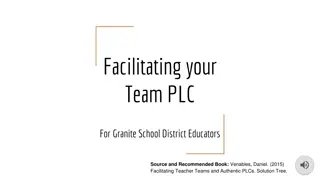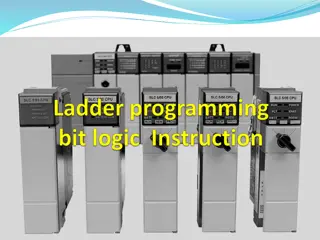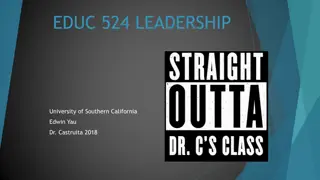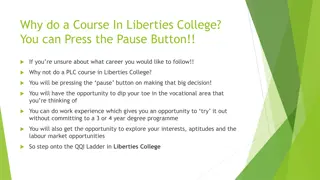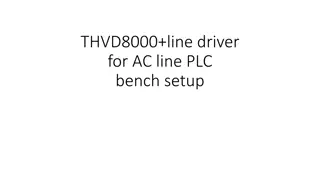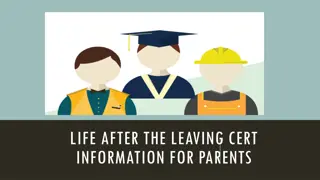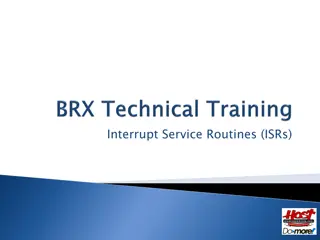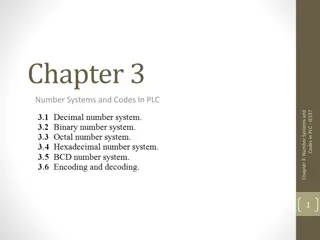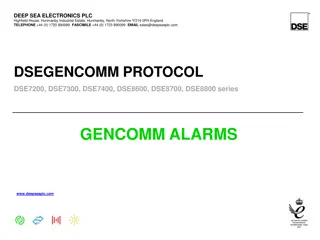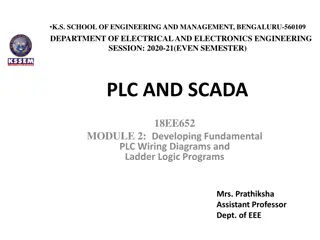Leveraging Leadership in PLC for Educational Success
Discover the keys to effective leadership in a Professional Learning Community (PLC) with Shawn Halbrook and Sarah Stobaugh. Explore the power of guiding coalitions, building trust within teams, and understanding the different types of power that influence group dynamics. Gain insights on enhancing collaboration, focusing on the right work, and fostering a culture of continuous improvement. Equip yourself with practical tools and strategies to lead your educational team to success. Join this transformative session to elevate your leadership skills and drive positive outcomes in your educational setting.
Download Presentation

Please find below an Image/Link to download the presentation.
The content on the website is provided AS IS for your information and personal use only. It may not be sold, licensed, or shared on other websites without obtaining consent from the author.If you encounter any issues during the download, it is possible that the publisher has removed the file from their server.
You are allowed to download the files provided on this website for personal or commercial use, subject to the condition that they are used lawfully. All files are the property of their respective owners.
The content on the website is provided AS IS for your information and personal use only. It may not be sold, licensed, or shared on other websites without obtaining consent from the author.
E N D
Presentation Transcript
Leveraging your leadership in a PLC Shawn Halbrook and Sarah Stobaugh South Conway County School District AAEA | July 24-26, 2023
2 SESSION OUTCOMES: By the end of this session, participants will have a better understanding of the purpose and power of a guiding coalition from the district level to the classroom and how to utilize tools to ensure the focus remains on the right work of their collaborative teams. Resources found on Sched
3 Who is joining us? 1.I am district leader. 2.I am a building leader. 3.I lead a high functioning leadership team/guiding coalition. 4.I lead a guiding coalition/leadership team. 5.We are just getting started.
5 SolutionTree.com/FerriterBooks
6 Guiding Coalition vs. Leadership Team Leadership Team Guiding Coalition Responsibilities Leads several areas- facilities, discipline, school improvement, PLC initiatives and so on SIngularly responsible for leading the PLC Process. Focus Members assist and support the leader in making decisions in multiple areas and topics- field trips, staff morale, building needs, etc. Members spend their entire meeting time on leading the PLC- student learning, collaborative culture, and results. Organizational Structure A hierarchy may exist. Admin has more of a boss relationship with the team. Members operate as a Do as we say, not as we do. There is a belief that secrets are kept among the team members and the rest of the school. The team has a flat organizational structure. There is not position of power within the team. Leader leads the meeting and facilitates decision- making. Team is seen as the first learners and support the teacher teams. Complete list found in Power Guiding Coalitions by Bill Hall
Four Essential Types of Power: 1. Power of Position 2. Power of Expertise 3. Power of Credibility 4. Power of Leadership Ability (Kotter, 1996) Does every team have a voice/representation on the team? Positions of Power Took linked here
8 We have our team! Now what? Nothing matters unless there is trust. Want to see the best laid plans fall apart? Skip right over the trust building and get to the work. At best, you will have compliance, but not deep commitment. Getting to know the people on your team and their strengths IS the work.
Building Trust District and school leaders need to see trust as the bridge that PLC reform must travel across, and that bridge is built incrementally through carefully made decisions and constant modeling by the leader. (Buffum, 2008)
Five Facets of Trust 1. Benevolence 2. Honesty 3. Openness 4. Reliability 5. Competence Complete list linked here
What Must I Be? What Must I do? So that I can Have Benevolent Care, extend goodwill, demonstrate positive intentions, support teachers, express appreciation, be fair, guard confidential information. Caring relationships and the best interest of others at heart. Honest Show integrity, tell the truth, keep promises, honor agreements, be authentic, accept responsibility, avoid manipulation, be real, be true to myself. Relationships based on authenticity and integrity Open Maintain open communication, share important information, delegate, share decision- making and share power. Relationships where, I can make myself vulnerable to others by sharing information, and influence. Reliable Be consistent, be dependable, show commitment, express dedication, exercise diligence. Predictability in my relationships to do what is expected on a regular basis Competent Buffer teachers form outside disruptions, handle difficult situations, set standards, press for results, work hard, set an example, be flexible. The ability to perform tasks as expected according to appropriate standards.
The 6 Types of Working Genius Wonder Discernment Enablement Invention Galvanizing Tenacity Complete list linked here
Norming your meetings to build trust When self-management norms are explicit and practiced over time, team effectiveness improves dramatically...Being on the team becomes rewarding itself and provide energy and motivation for accomplishing the team s goals. - Learning by Doing, 2004
Sometimes, the common patterns of participation on teams are positive, encouraging collective inquiry around practice. Other times, those common patterns of participation are negative, preventing members from learning from one another. Ignoring your norms means ignoring your needs. Ferriter. (2020). The Big Book of Tools for Collaborative Teams in a PLC at Work.
Pet Peeves Need to know I get all my thoughts out (verbally) before I land on my great idea. People who don t participate, and then share concerns/ideas AFTER the meeting. Developing Norms Tool
The Four Critical Questions at Work 1. What do want students to know and be able to do? 2. How will we know if they know it? 3. How will we respond if they haven t mastered it? 4. How will we respond if they have mastered it?
The Four Critical Questions in Action 1. What do we want TEACHERS to know and be able to do this year? Focus #1: The team s plan for student assessment is fully aligned with the instructional outcomes (standards), uses clear criteria, and is appropriate to the needs of students. Assessment results are monitored to plan for future instruction for groups of students. Focus #2: Assessment is regularly used in instruction, through self- assessment by students, monitoring of progress of learning by the teacher and students, and high-quality feedback to students. Students are fully aware of the assessment criteria used to evaluate their work.
Support and Accountability PLT Agendas Guiding Coalition Agenda Template Meeting Observation Tool Lightning Round Two highest priority One opportunity One leadership reflection Celebrations - - -
Next Steps. What must we START doing and STOP doing to leverage our leadership to ensure student achievement this year?
Questions? Sarah Stobaugh Morrilton Intermediate School sarah.stobaugh@sccsd.org Shawn Halbrook South Conway County School District shawn.halbrook@sccsd.org
21 SolutionTree.com/FerriterBooks


